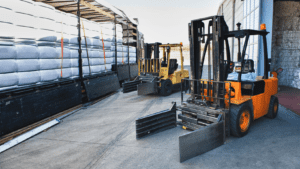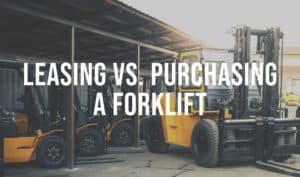
Key Tips to Keep Your Employees Safe This Winter
With winter right around the corner, it’s important to evaluate the safety of your facility. Are you ready for the hazards winter brings? If your employees work outdoors during the winter or in cold environments, you probably have an understanding of cold stress.
Any worker exposed to cold environments is at risk for cold stress. It can have very serious health consequences for workers. Cold stress occurs when the body can no longer maintain its normal temperature. This leads to more dangerous conditions like hypothermia, frostbite, and trench foot.
These conditions are extremely serious and, in some cases, could result in amputation or even death.

It is important to remember that cold stress doesn’t only happen in freezing temperatures, but in working environments with low temperatures (below 50_F), high wind speed, contact with cold surfaces or water, and inadequate clothing. A combination of these factors can cause cold stress, not just freezing temperatures.
There are a number of preventative measures an employer can take to keep workers safe and comfortable in cold environments. Below are some strategies recommended by OSHA and NIOSH to protect workers from hazards:
- Schedule frequent breaks for workers to warm back up in a heated area
- Serve warm non-caffeinated and non-alcoholic drinks
- Provide proper personal protective equipment for workers
- Schedule work to be done during the warmest part of the day
- Save maintenance jobs and repairs for the warmer months in the year
- Use a variety of engineering controls, like radiant heaters
OSHA requires employers to provide personal protective equipment (PPE) for workers. This can often include providing protective clothing for cold environments. Consider fleece balaclavas to keep the face, neck, and ear protected from the freezing temperatures. Workers should wear several layers of loose clothing for better insulation and circulation. Also, workers should have boots that are waterproof and insulated.

Encourage workers to carry extra cold-weather gear. Below is a list of beneficial gear:
- an extra pair of socks
- gloves
- hats
- jacket
- blankets
- change of clothes
* First aid kits at the facility or work site should include a thermometer and chemical hot packs.*
Employers and safety managers should be aware of cold stress symptoms. Learn to identify these symptoms in workers. Another important measure that can be taken is to provide cold stress training for workers. Workers should understand worker risk, prevention, symptoms, the importance of monitoring themselves and fellow coworkers for any possible signs of cold-related hazards.
Other Winter Safety To Keep In Mind

Even if workers are not working outdoors or completing work in a cold environment, it can be beneficial to learn other safety measures you can take. Winter weather often brings ice to your sidewalks, walk-ways, shipping docks, and other walking surfaces. The number of slips, trips, and falls in the workplace dramatically rise every winter.
Inform workers about wearing slip-resistant footwear during this time of year. Clear walkways or de-ice them with sand/salt daily. When workers come in the building with wet shoes these areas can often become a slipping hazard. Clearly mark or barricade these hazardous areas.
Remember Your Traveling Workers
Road conditions can also pose a risk to workers traveling to their job. Remind workers to be aware of icy conditions on the road. Give advice on driving safely in winter conditions and promoting safe driving practices may ensure your employees get to work safely. If your parking lot is notorious for freezing over, spread rock salt to keep cars from slipping.

Prioritize Your Employees’ Safety This Winter
With winter upon us, it is important to remember those working and traveling in cold environments. Keep workers safe this season by understanding the symptoms of cold stress, keeping the walkways in your facility dry and clear, and promoting safe driving practices for your workers.



